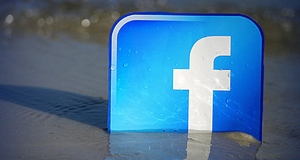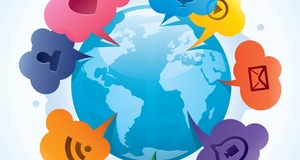From Elon Journal of Undergraduate Research in Communications VOL. 3 NO. 2Coupons of the 21st Century: The Golden Age of The Daily Deal Industry
IN THIS ARTICLE
KEYWORDS
AbstractSince its introduction in the late 1800s, coupons have transformed drastically to appeal to the changing needs and behaviors of the common consumer. Although still existing, the classic paper coupon went digital with the introduction of the Internet. Now, companies such as Groupon and LivingSocial offer discount gift certificates in a "deal-of-the-day" format. This research focused on the unique features of daily deal promotions and the impact they have on persuading consumers to purchase goods and services. Additionally, this research analyzed how Groupon and LivingSocial use social networking as a relationship-building tool to reach consumers on a local and national level. The case study analysis found both companies rely on witty advertising content to relate to consumers as well as actively utilize social media sites for feedback from customers. I. IntroductionThis study examined the word choice or rhetoric used in Groupon and LivingSocial advertisements, two giants in the online daily-deal industry. The rhetorical structure, featured throughout most daily deal promotions, aims to target a mass audience through the use of humorous and witty content. This research also examined how Groupon and LivingSocial use Twitter and Facebook for marketing and communications, and their reliance on these platforms for relationship and reputation-building to actively communicate with consumers. A coupon, a ticket, or document that can be exchanged for a discount or rebate, is often used as a key marketing and advertising technique. In 1887, Coca-Cola created the world's first coupon (Collard & Pustay, 2001, p. 1). The ticket, mailed to homes throughout the country and strategically placed in magazine periodicals, offered potential customers a free glass of the year-old drink. According to Collard and Pustay (2001), between the years of 1894 and 1913, approximately 8.5 million copies of the coupon were redeemed at soda fountains nationwide, marking the first coupon campaign a success. By the early 20th century, coupons became a ubiquitous tool in promotional advertising. Couponing developed into a key strategy for attracting the attention of new customers, building brand awareness for businesses, and increasing sales and profits. The introduction of the Internet at a massive or commercial level in 1990 established the presence of printable and downloadable coupons. Thus, for the first time, consumers had continuous access to promotions and daily discounts. Online coupons gained popularity at a rapid pace due to their constant availability and option to print deals in unlimited qualities. Today, daily online deals have become the latest advertising sensation, providing discounted offers to consumers for restaurants, services, ticketed events, goods, and other items (Byers, Mitzenmarcher, & Zervas, 2010). The majority of online coupons offer a discount or reduction in cost, a percentage discount, or free shipping (Collard & Pustay, 2001). Groupon and LivingSocial, founded respectively in 2008 and 2009, feature discounted gift certificates and coupons to local or national companies. In order to reach consumers, these sites use special marketing techniques intended to match the needs of their target markets. Additionally, both companies rely on the benefits provided by social media sites such as Facebook and Twitter to actively reach consumers on both a local and national level. Groupon and LivingSocial utilize social media sites as a public forum, posting the daily discounts and promotions, and as a relationship-building tool to maintain communication with consumers (Arasbshahi, 2010). Groupon, headquartered in Chicago, serves over 500 markets and 44 countries. The company was launched in 2008 by Andrew Mason and now has over 10,000 employees located throughout the world. According to its website, "We want each Groupon purchase to feel too good to be true, from the moment you buy the deal to the day you use it" (Groupon, 2012, p. 1). A unique feature to the company is its tailored "Groupon Now" service as well as its Groupon VIP program. Groupon Now is a smartphone and tablet-friendly application that allows users to push an "I'm hungry" or "I'm bored" button to view the best and closest deals for food and entertainment. The Groupon VIP program, launched in February 2012, offers members access to deals 12 hours earlier than non-VIP members at a fee of $30 a month (Groupon, 2012, p. 1). Living Social, based in Washington, D.C., operates in over 600 markets across six continents. The company has more than 60 million members worldwide and the numbers of vouchers purchased since the company was founded in 2009 total 63 million. (LivingSocial, 2012, p. 1) The company specializes in daily deals for escape and travel packages, family friendly activities, adventures, takeout and delivery, and gourmet dining. According to its website, "We help great local businesses grow by introducing them to high-quality new customers, and give merchants the tools to make our members their regulars" (LivingSocial, p. 1). II. Literature ReviewIn the following literature review, the author reviewed scholarly articles on theoretical framework behind Groupon and LivingSocial, audience perception and attitudes toward them, and use of rhetoric and social media in daily deal promotions. Theoretical FrameworkPersuasion, with roots dating back to the ancient Greeks and Aristotle, is a key concept in modernday advertising. Much of Aristotle's early research recognized that one specific approach to persuasion did not generally fit all situations. Instead, a persuasive speaker must adapt based on the context of the message and its intended audience (Larson, 2010, p. 20). Although advertising and mass media were not yet invented, Aristotle recognized the idea of segmented audiences and the value of customizing the message to a target market. Both Groupon and LivingSocial have been recognized for their reliance on persuading consumers through targeted language and rhetoric. Aristotle's Rhetoric, considered by many as the founding work on persuasion, focused on artistic proofs or appeals that persuaders use to create, manipulate or inspire action (Larson, 2010p. 20). Furthermore, effective persuasion consists of both artistic and inartistic proofs. Larson states, "The persuader controls artistic proof, such as the choice of evidence, the organization of the persuasion, style of delivery, and language choices" (Larson, 2010, p. 20). On the other hand, inartistic proofs include instances that cannot be controlled by the speaker. Aristotle believed that persuasion can be judged as successful or unsuccessful based on three forms of artistic and inartistic proofs: ethos, pathos and logos. These aspects of communication appear in almost all forms of persuasion as an attempt to appeal to an audience. Ethos refers to the ethical appeal or sense of the author's credibility while pathos, or emotional appeal, means to persuade a receiver by appealing to their emotions (Killingsworth, 2005, p. 251). Pathos is commonly associated with 'colorful' language and imagery used by the persuader to spark strong emotion and feelings. Larson notes that pathos can be developed through the use of meaningful language, emotional tone, emotion evoking examples, stories of emotional events, or implied meanings (Larson, 2001, p. 21). Logos, the final criteria for judging a persuasive message, is the appeal to logic or reasoning. For example, many forms of persuasion, including advertising, cites specific facts and statistics to appeal to a receiver. Successful persuasion must use a combination of these three tactics to relate to an audience. Audience Perception and AttitudesAlthough the majority of the research finds a strong customer relationship between daily deal websites and their subscribers, room for growth remains. Groupon and LivingSocial have positioned themselves successfully within their subscribers and the businesses they promote. Streitfeld (2010) explains, "The hope instead is that users will eventually perceive it as an impartial guide to a city or a neighborhood, somewhat in the manner of the local paper's weekend section" (p. 2). This research highlights the successful tactics and appeals utilized by the most popular daily deal companies. Consumer perceptions and attitudes specifically regarding Groupon and its competitor, LivingSocial, will be discussed in greater detail in the findings section. Rhetoric and Daily Deal PromotionsAristotle's findings on persuasive communication set the groundwork for the advertising and marketing industry. Successful advertisers must appeal to their audiences through the three persuasive proofs as outlined by Aristotle. (Killingsworth, 2005). Therefore, many companies, such as Groupon and LivingSocial use certain types of language and rhetoric to play on the emotions of the audience. In other words, daily deal sites focus heavily on word usage and rhetoric to establish a strong relationship with potential customers. By building and maintaining this relationship, daily deal websites will continue to build a healthy reputation among its target markets. LivingSocial and Groupon offer a new deal each day to all members who subscribe via email. Both web services email subscribers at least two times a day to promote discounts on products and services offered by merchants at both a national and local level. In terms of local promotions, the deals depend on the geographic region chosen by each subscriber. Through the initial enrollment process, the subscriber indicates their zip code, gender and age. Then, the companies send consumers the most relevant deals based on the information provided through email messages, Twitter blasts, and Facebook posts. Both Groupon and LivingSocial employ a large number of copywriters to draft descriptions of each deal featured by email, website, and social media postings. The promotional text has been seen as a contributing factor to the success and popularity of the sites (Dholakia & Kimes, 2011). More specifically, copywriters rely on a unique mix of thorough fact-checking statistics and witty humor to relate to their target market. Daily Deal Promotions and Social MediaWithin the decade, companies have consistently utilized social media as a marketing and advertising tool. Social media sites such as Twitter, Facebook, LinkedIn, etc. constantly post promotions and daily discounts for companies, restaurants, trips and escapes, and so forth. (Streifeld, 2001). Businesses and corporations are beginning to view social media as channels to reach their key audiences and publics. Social media sites have transformed the way people operate their businesses by expanding at an exceedingly rapid rate (Ye, Wang, Aperjis, Huberman & Sandholm, 2011). Many individuals rely on social networking sites, for example, to assess peer reviews on products and services. For businesses, social media allows them to communicate with dissatisfied consumers, build brand awareness, and actively advertise their product or service. Erik Qualman (2011) outlines specific tools and tactics often used to engage the attention of consumers via social media marketing. These tactics include communicating with dissatisfied customers on their own social networks, creating brand profiles on popular social networks, and creatively advertising within social media through the creation of brand-related applications, promotions, and podcasts. (Qualman, 2011). Research QuestionsThis research sought to answer the following three questions: Q1: How do Groupon and LivingSocial connect with consumers through their use of strategic word choice, language, content and humor? Q2: What are the common characteristics, demographic information, and needs and wants of the typical Groupon user versus the typical LivingSocial user? Q3: How do Groupon and LivingSocial actively communicate with subscribers through social media sites? III. MethodologyThis study sought a clearer understanding of how Groupon and LivingSocial connect with consumers through advertising content and social media usage. Additionally, the research discussed common characteristics among typical daily deal users. To achieve the desired results, the researcher conducted a case study analysis of the two daily deal companies, Groupon and LivingSocial. The case study is a qualitative analysis of the two companies based on prior quantitative research conducted on each company's consumer demographics, levels of awareness and usage and subscriber base. According to Yin (1984), "Case study research excels at bringing us to an understanding of a complex issue or object and can extend experience or add strength to what is already known through previous research" (p. 23). Case studies provide a systematic method for effectively collecting data, analyzing information, and reporting and responding to the results. The second part of the study examined how Groupon and LivingSocial are using social networking sites through a qualitative content analysis of each company's Facebook and Twitter page. Two consecutive weeks were chosen at random, and were used to collect content from both company's national Twitter and Facebook accounts. The weeks chosen by the researcher for content analysis were March 1 (12:00 a.m.) to March 15 (11:59 p.m.). Posts were analyzed based on dialogue and feedback from consumers. This case study focused on the ways in which each company communicates with subscribers through social media as well as the consideration of rhetoric and word choice when advertising deal promotions. The researcher looked to gain detailed insight into the characteristics of both companies, tactics used to communicate with their customers on social media sites, and the importance of rhetoric and reliance on humor to communicate with their target markets.Continued on Next Page » Suggested Reading from Inquiries Journal
Inquiries Journal provides undergraduate and graduate students around the world a platform for the wide dissemination of academic work over a range of core disciplines. Representing the work of students from hundreds of institutions around the globe, Inquiries Journal's large database of academic articles is completely free. Learn more | Blog | Submit Latest in Business & Communications |

















